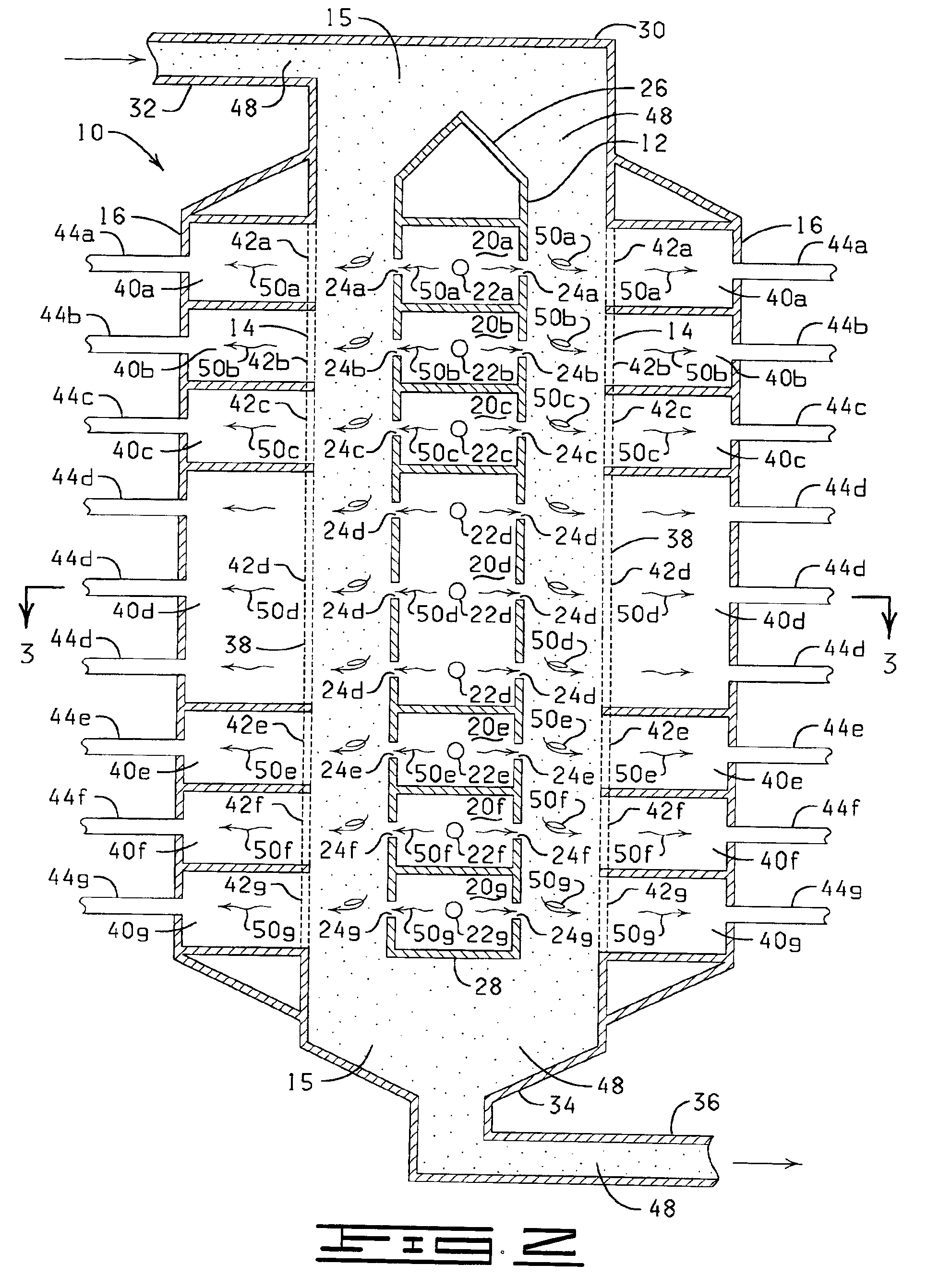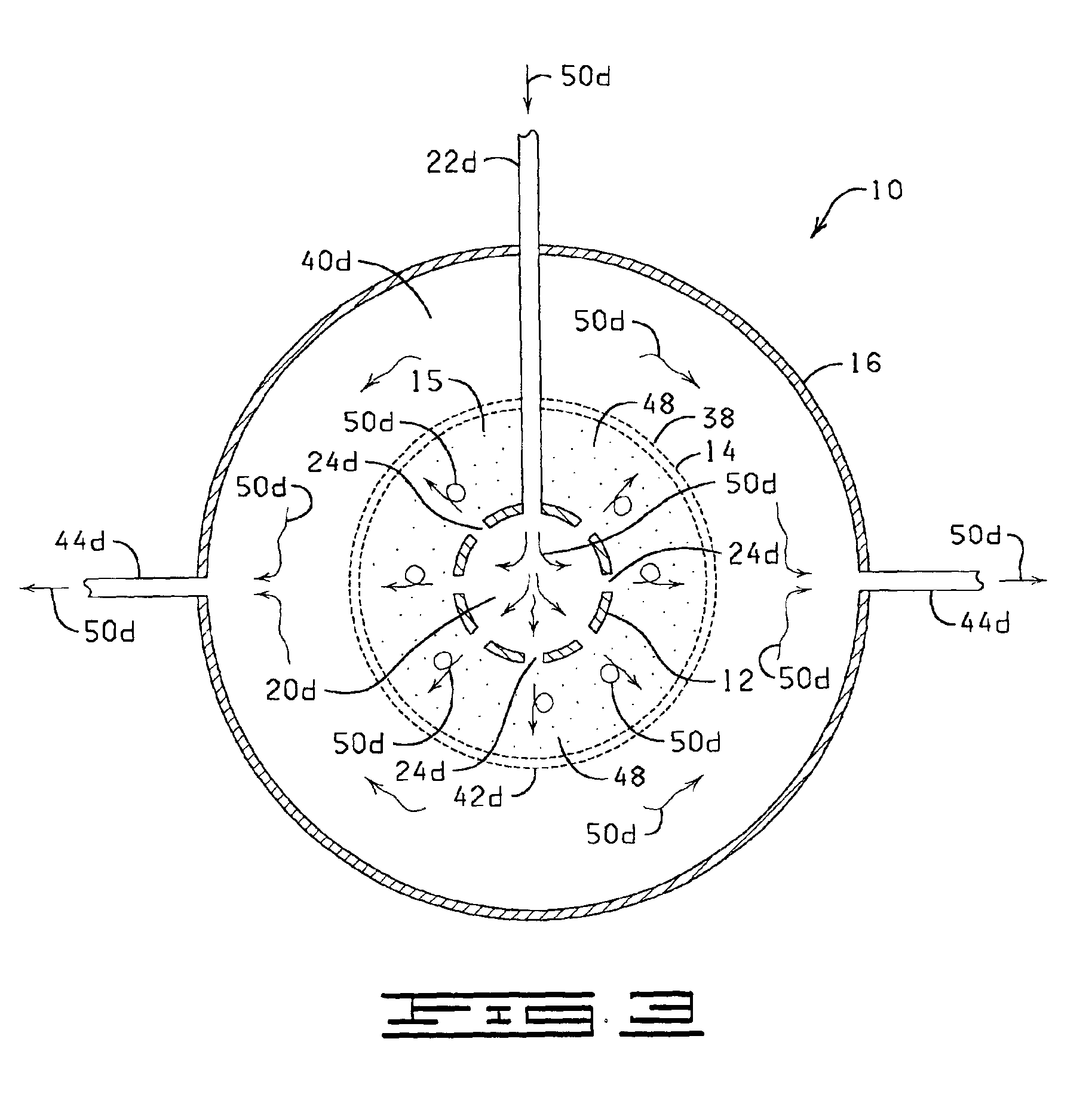Method and apparatus for producing carbon nanotubes
a technology of carbon nanotubes and methods, applied in carbon nanotubes, nanotechnology, inorganic chemistry, etc., can solve the problems of insufficient quantity of single-walled carbon nanotubes for practical technology, inability to produce nanotube quantities by methods using these catalysts, and high cost of metal catalysts in the production process
- Summary
- Abstract
- Description
- Claims
- Application Information
AI Technical Summary
Benefits of technology
Problems solved by technology
Method used
Image
Examples
Embodiment Construction
[0019]A preferred embodiment of a method contemplated by the invention described herein is characterized by the schematic flowchart shown in FIG. 1. The process shown in FIG. 1 is but one embodiment of the present invention and as such it is understood that the present invention is not limited to this example or to other examples shown herein.
[0020]FIG. 1 shows a series of process steps A-Q which represent a method of continuous catalytic production of carbon nanotubes. In Step A, a quantity of catalytic particles is introduced into a reactor, such as but not limited to, the reactor 10 described elsewhere herein in detail and shown in FIGS. 2 and 3, for example. The catalytic particles are any particles comprising a catalyst effective in forming carbon nanotubes. Especially preferred embodiments of the catalytic particles are described elsewhere herein, but it will be understood that the present invention is not to be limited only to the types of catalytic particle explicitly descri...
PUM
 Login to View More
Login to View More Abstract
Description
Claims
Application Information
 Login to View More
Login to View More - R&D
- Intellectual Property
- Life Sciences
- Materials
- Tech Scout
- Unparalleled Data Quality
- Higher Quality Content
- 60% Fewer Hallucinations
Browse by: Latest US Patents, China's latest patents, Technical Efficacy Thesaurus, Application Domain, Technology Topic, Popular Technical Reports.
© 2025 PatSnap. All rights reserved.Legal|Privacy policy|Modern Slavery Act Transparency Statement|Sitemap|About US| Contact US: help@patsnap.com



